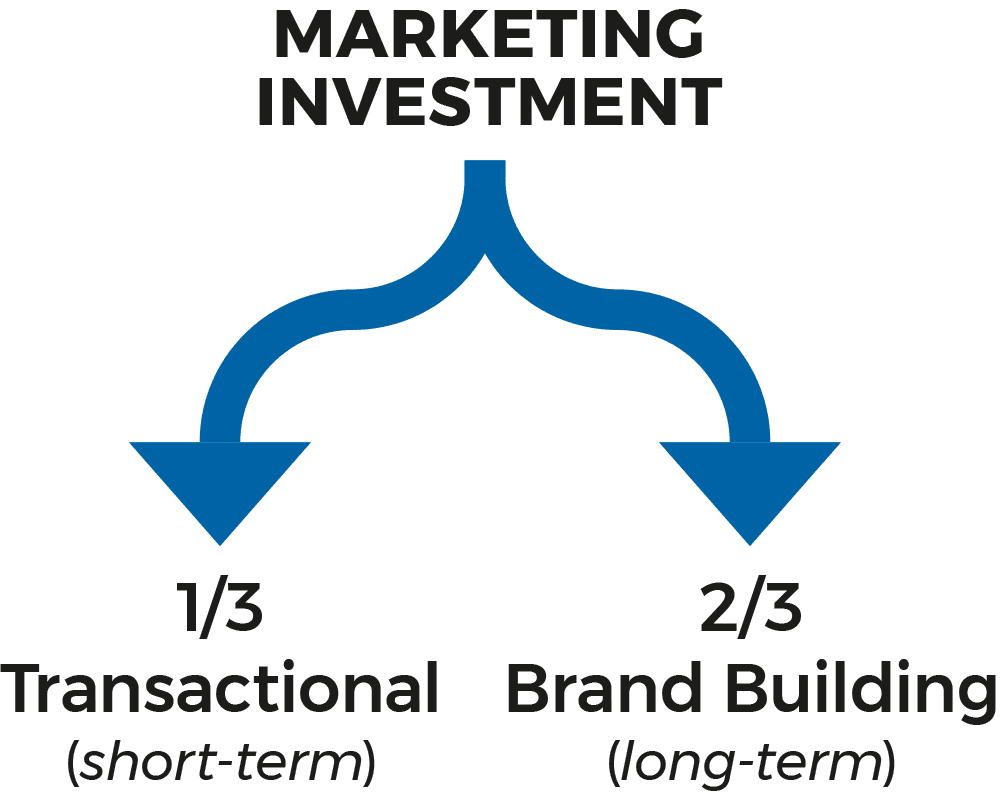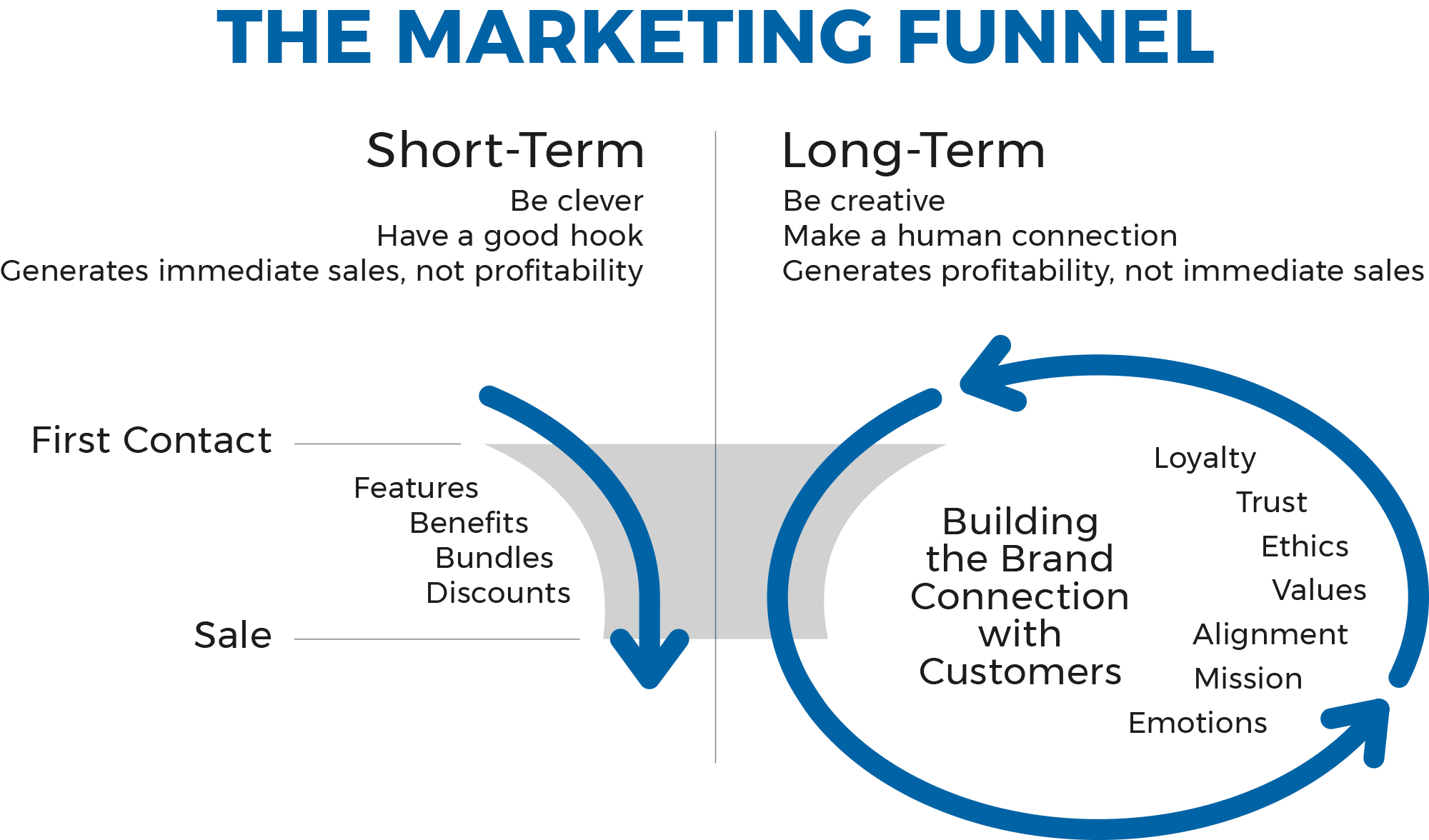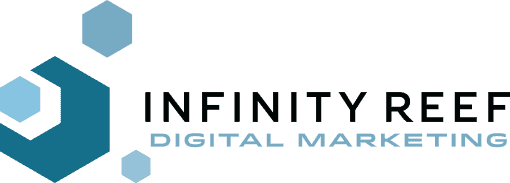Think of a favourite brand. How did it become a central part of people’s lives?
Some products are a “right place, right time” kind of thing and arrive with a splash. Yesterday, you’d never heard of it. Today, it’s everywhere. Maybe tomorrow it’s gone.
Products that live long enough to become brands have several things in common. First, they are useful. Second, they are reliable. Third, people will pay for them regardless of price.
Beyond the products themselves, the transformation of something we buy into something we need or love happens over time. At the very least a few months, but more often years and decades.
What’s Worked
There is conclusive evidence on the effectiveness of long-term marketing efforts in creating profitability through an emotional connection with the audience by building a brand. A positive brand is a relationship nurtured between the company and its customers over time that goes beyond merely buying a product.
Think of examples such as Coca-Cola, Chevrolet and Levi Strauss and how their products fit into people’s lives and what it says about their tastes, style and values. These companies grew their brands by first creating products that resonated with customers, made their products to consistent standards, and finally promoted their products over decades in ways that put them at the centre of customers’ lives, inextricably entwined. The more human and creative those campaigns are, connecting what is offered to customers’ lives, the more customers respond. This is the gold standard for long-term growth.
In traditional sales efforts, short-term marketing is done near or at the retail level and is concerned with the final sale. For example, in a grocery store’s flyer, Coca-Cola would be on special – a lower price given for purchasing it in bulk. The local Chevrolet dealership with new models on the way would offer discounts on last year’s vehicles still on the lot to clear them out.
New Channels
Over the past two decades, traditional marketing has been joined by digital methods represented largely by online sales.
Much of today’s advertising – especially in online mediums – focusses on features and benefits leading to an immediate sale. These short-term efforts are compelling and often clever but not deeply creative, and there’s increasing data revealing their lack of brand building fails to gain the audience’s hearts and minds. In other words, no loyalty. And no loyalty means price sensitivity remains high. If a competitor comes along with a same or similar offering and lower pricing, the customer is likely to jump. The sale is transactional and quickly forgotten.
The conclusion is to use a portion of the revenue of today’s short-term sales to invest in developing long-term profitability by brand building. The general split is considered to be 1/3 short-term and 2/3 long-term, and especially with every-day items priced at a hundred dollars or less, we’re seeing very little of those all-important long-term marketing efforts being done by many companies in that space.

Years of marketing and sales data have yielded the general split shown above. Many businesses are perpetually focussed on short-term methods and so never develop the benefits long-term marketing investment can bring.

Years of marketing and sales data have yielded the general split shown above. Many businesses are perpetually focussed on short-term methods and so never develop the benefits long-term marketing investment can bring.
Being Vulnerable
The lack of long-term focus also makes businesses highly vulnerable to swings in the market, resulting in lower sales because customers haven’t prioritized those products as necessities. Customers that have bought into the brand promise will find ways to purchase those products – even in a downturn – and that lessens any drop in sales that may occur. This also means fewer layoffs, better service from suppliers and more confidence from financial markets. It’s the way to build an economically sustainable business. A company paying attention to the long-term will likely emerge from challenging times in a stronger position than competitors who don’t.
Turning the digital marketing wheel can largely be automated at the short-term level. Google and Facebook ads are easy to set up and are modestly priced to keep them running. Building a presence and gaining traction still takes time and the six-month marker isn’t only a measure for long-term campaigns here. Deals and specials are a great way to get people interested in products and services.
The next step up is generating curiosity and establishing credibility, the first steps of brand building. Social media is a great place to start that conversation with customers. Sharing information, being part of a community that is a good fit for products and values, and not necessarily selling anything right out of the gate is a way to earn trust.
The traditional equivalent was going into a dealership to kick the tires of a few models but not necessarily being ready to buy a car. It was the salesperson’s job to get to know you a little, find out what you responded to, and provide you with information whether it related to the final sale or not. The customer likely left that first time with a couple of brochures and knowing the name of the salesperson to talk to when they were ready to buy.
Digitally, that takeaway would be a link to the company website if you liked their social media posts. Informative blog posts on a company’s site allow you to dig deeper into customers’ world and ideally spur them to reach out to you to discuss things further.

The marketing (or sales) funnel is a metaphor for the journey a customer takes from first becoming aware of a product and every point of contact that ultimately leads to a purchase. Beyond the short-term goal of making immediate sales, long-term marketing addresses building trust and loyalty so customers return time and again on their own to rejoin the sales funnel.
A Self-Sustaining Funnel
Using traditional methods or digitally building that chain of events that draws customers in is called the marketing or sales funnel; both short-term and long-term methods are needed to create a robust, self-sustaining marketing process. To reiterate, short-term gets immediate sales, long-term keeps customers coming back.
Far too many businesses are hesitant about funding marketing efforts consistently. If they spend $1 they want $10 back immediately. Otherwise, they see marketing dollars as overhead and not contributing to the profitability of their company.
When companies spend their marketing dollars badly – with no focus on sustainability and growth – that is all too often the case. It leaves companies gun shy, afraid to invest new money after previous spends that yielded little return.
From our perspective, marketing and connecting with audiences is what we do. We don’t know the ins and outs of a new client’s business – at least at first. We don’t expect that you know about effective marketing unless you’ve focussed on it and have had previous good results.
If a company is not having much success, they’ve likely overestimated their marketing skills or haven’t focussed on the right areas.
Perhaps it’s time to adequately fund marketing efforts and delegate that work to specialists. We’re a small team that commits to our clients’ business as if it were our own. We’re the external agency that works with a company like we’re the internal marketing department.
Infinity Reef is a small, nimble agency that outperforms for its size and responds well to client engagement and collaboration. Contact us and we’ll be happy to have an unhurried, in-depth conversation with you.
